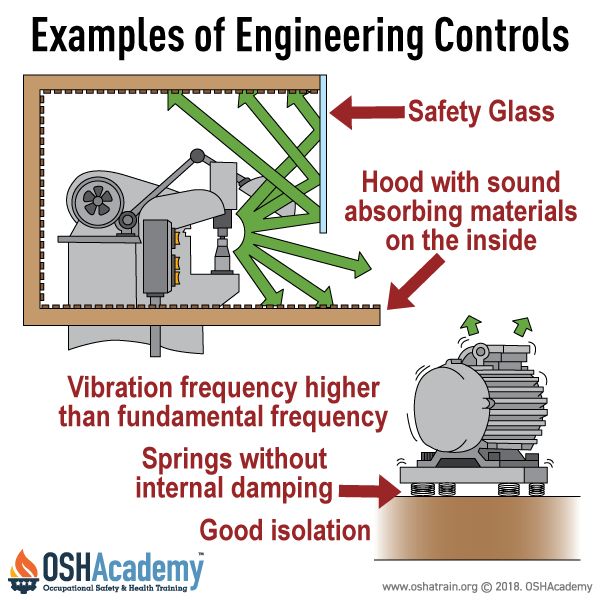Controlling Noise
Noise controls are the first line of defense against excessive noise exposure. The use of these controls should aim to reduce the hazardous exposure to the point where the risk to hearing is eliminated or minimized. With the reduction of even a few decibels, the hazard to hearing is reduced, communication is improved, and noise-related annoyance is reduced. There are several ways to control and reduce worker exposure to noise in a workplace.
Engineering Controls
Engineering controls that reduce sound exposure levels are available and technologically feasible for most noise sources.
Engineering controls involve modifying or replacing equipment, or making related physical changes at the noise source or along the transmission path to reduce the noise level at the worker's ear. In some instances the application of a relatively simple engineering noise control solution reduces the noise hazard to the extent that further requirements of the OSHA Noise standard (e.g., audiometric testing (hearing tests), hearing conservation program, provision of hearing protectors, etc...) are not necessary. Examples of inexpensive, effective engineering controls include some of the following:
- Choose low-noise tools and machinery (e.g., Buy Quiet Roadmap (NASA)).
- Maintain and lubricate machinery and equipment (e.g., oil bearings).
- Place a barrier between the noise source and employee (e.g., sound walls or curtains).
- Enclose or isolate the noise source.
Knowledge Check Choose the best answer for the question.
5-5. Placing a barrier between a noise source and an employee is an example of a(n) _____.
You forgot to answer the question!

